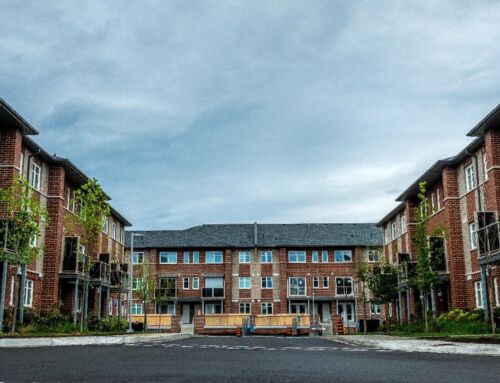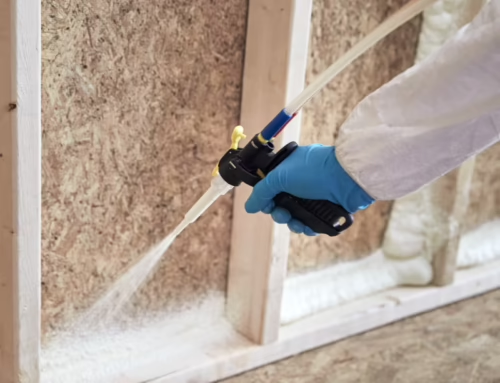Did you know most of the world’s buildings are energy inefficient?
Constructed during a time where little or no sustainable practices were applied to structures, green renovation is a way to reduce the energy intensity of these buildings.
The good news is that 50 – 90% of the global energy used in buildings today can be saved by applying existing energy efficiency products and technology. In fact, insulation can help reduce a building’s heating needs by up to 70%. Increase Energy Efficiency with ROCKWOOL using the unique thermal, acoustic, and fire resilient benefits of stone wool insulation. Using modern insulation from ROCKWOOL can make buildings more energy efficient and help in our fight against climate change.
Why energy renovation?
To achieve significant results, initiatives that promote the green renovation of the existing building stocks will have to play a significant part in any strategy.
Both a home improvement project and a deep energy renovation scheme mandated by new policies contribute positively to the environment, society, and local economy. So, whether you are a homeowner, business owner or are helping shape the policies of the future, renovation should be on your agenda.
What does energy and green renovation mean?
Green renovation takes a holistic view of a structure’s entire lifecycle. Although there is no single definition of what a green home or building is, it is primarily a process of assessing the carbon footprint for all aspects of the structure.
Green or energy renovation projects typically address concerns surrounding:
- The total amount of emissions generated over the life of the building.
- The types of energy generation systems used to supply the structure.
- The optimisation of the building’s design to reduce the carbon footprint to a level as close to net-zero as possible.
- The ability to recycle the building materials when the structure reaches its end of useful life.
- The responsible sourcing of building materials used during remodelling.
Different schemes and sustainable building codes apply to cities around the world. Achieving carbon-neutral cities by 2050 will require a concerted effort and doubling the rate of renovation every year moving forward. Deep renovation initiatives can cut energy demand by up to 75 percent in structures.
Main focus areas of energy renovation
The main aim of any energy renovation project is to reduce energy waste and increase the sustainability of buildings. For building owners, energy renovation also offers a significant potential for savings on energy costs, making it a worthwhile investment.
Here are the main focus areas every green renovation project should consider.
Improving thermal efficiency with modern insulation
Start with Roof and Exterior Insulation
When looking to cut energy consumption in buildings, reducing the energy used for heating and cooling must form a core element of the renovation. With up to 50 per cent of the energy consumed in buildings stemming from space heating, it is clear that reducing the amount consumed could offer significant cost savings and emissions reductions.
Using high quality stone wool insulation, it is possible to reduce the amount of energy consumed for heating and cooling building by up to 70 per cent, making it perfect for an energy renovation of existing buildings.
Renovating for future sustainability
Your Content Goes HereNow that we’ve touched briefly on the concepts of reducing the energy consumption of a building, it’s time to also reflect on the materials used. For a renovation to truly be green, it’s important to choose materials that are sustainably sourced and to consider their carbon impact over the lifetime of the material.
Over its lifetime, stone wool insulation can save 100 times the carbon used in its production, meaning it has a net positive impact on your building’s sustainability profile. Our stone wool can contain up to 75 percent recycled content, and this includes not only recycled stone wool but also waste from other industries, meaning that the product itself contributes to a circular economy.
Eliminating thermal bridging
Certain materials are more conductive than others, leading to thermal bridges where energy flows through the path of least resistance. Using continuous insulation in wall cavities and between studs will eliminate the thermal bridges, improving the overall energy efficiency of the structure.
Thermal bridges can also lead to cold spots in the interior of a wall assembly and increase the risk of condensation within enclosures. Making sure to prevent these thermal bridges requires the entire building envelope to be thoroughly insulated without disruption. This lays several requirements on the insulation materials used. Firstly, the material must be able to fit snuggly within any small space that might exist near beams, windows, or doors to make sure these are adequately closed off. Secondly, the material itself must maintain its dimensions and performance over time, so as not to leave any gaps behind after the installation.
Stone wool is an naturally robust material meaning it can withstand moisture, water, compression and even fire without losing its dimensional stability and thermal performance. It can be cut, bent or compressed to fit any shape or size without losing performance, making it easy work with.
Benefits of energy renovation with stone wool insulation
Using stone wool as part of a deep energy renovation project can help limit CO2 emissions. It also helps reduce energy usage, lower operational costs, and make buildings and homes more sustainable. Whether it’s for an eco-friendly, green home or a commercial property, energy renovation with stone wool insulation also promotes circularity as it is made from highly recyclable materials.
Sourced from one of the most abundant natural resource available and due to its unique thermal, acoustic, and fire resilient benefits, stone wool insulation remains a sustainable option for improving the world’s building stock. ROCKWOOL Group develops innovative solutions to help owners, governments, and property investors make their buildings more resilient.






